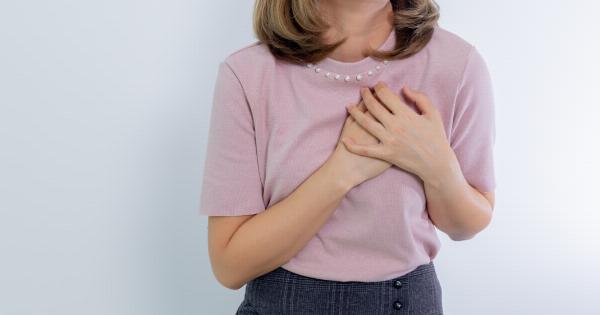When most people think of a heart attack, they envision someone clutching their chest in pain. While chest pain is a classic symptom of a heart attack or myocardial infarction, it is not the only indicator.
In fact, there are several other signs of infarction that are often overlooked or misinterpreted. Recognizing these additional symptoms could be the key to early detection and treatment, potentially saving lives. In this article, we will explore the less common signs of infarction that you should be aware of.
1. Shortness of Breath
One of the most common signs of an infarction, besides chest pain, is shortness of breath. This can manifest as difficulty breathing, rapid breathing, or a feeling of breathlessness. It may occur suddenly or gradually worsen over time.
If you find yourself struggling to catch your breath or feel winded even during simple activities, it could be a sign of a heart attack.
2. Fatigue
Unexplained fatigue or extreme tiredness is another warning sign of a heart attack. Many people mistakenly attribute their exhaustion to other factors, such as lack of sleep or stress.
However, if you are experiencing persistent fatigue that cannot be explained by normal factors, it is essential to consider the possibility of an infarction.
3. Dizziness and Lightheadedness
If you suddenly feel dizzy or lightheaded, it could be an indication of a heart attack. These symptoms may occur in isolation or accompany chest pain.
When the heart is not receiving adequate blood flow, it can affect the oxygen supply to the brain, leading to dizziness and lightheadedness.
4. Nausea and Vomiting
While nausea and vomiting are commonly associated with gastrointestinal issues, they can also be signs of an infarction. It is not unusual for people experiencing a heart attack to experience these symptoms, particularly in women.
If you notice persistent or severe nausea and vomiting without any apparent cause, consider seeking medical attention.
5. Sweating
Excessive sweating, often described as cold sweats, can occur during a heart attack. This is a result of the body’s sympathetic nervous system response to stress and pain.
If you are experiencing unexplained sweating or sweating in cold conditions, it may be an indication of an infarction.
6. Upper Body Discomfort
Chest pain is not the only type of discomfort associated with a heart attack. Pain or discomfort in other parts of the upper body, such as the arms (especially the left arm), back, shoulders, neck, or jaw, can also be signs of an infarction.
These symptoms may occur on their own or in conjunction with chest pain.
7. Indigestion or Heartburn
Infarction can sometimes masquerade as indigestion or heartburn.
If you experience unusual or persistent indigestion-like symptoms, such as bloating, discomfort, or burning sensation in the chest or upper abdomen, it is important not to dismiss them solely as digestive issues.
8. Anxiety and Restlessness
Feeling anxious or restless, especially when combined with other symptoms, can indicate a heart attack. These emotional responses are often a result of the body’s natural stress response to the lack of oxygen and blood flow to the heart muscles.
Pay attention to sudden or unexplained feelings of anxiety or restlessness.
9. Weakness or Weakness on One Side
Another lesser-known sign of infarction is weakness or numbness on one side of the body. This symptom can be similar to the warning signs of a stroke.
If you experience sudden weakness or numbing sensations in your face, arm, or leg, especially if it only affects one side, it is crucial to seek medical attention immediately.
10. Irregular Heartbeat
In some cases, a heart attack can cause an irregular heartbeat or palpitations. You may feel your heart racing, skipping beats, or pounding in your chest.
If you have a known heart condition or are at risk for a heart attack, pay attention to any changes in your heart rhythm, as it could be a sign of an impending infarction.
Conclusion
While chest pain is a primary symptom of a heart attack, it is essential to recognize that there are other signs of infarction that should not be ignored.
Being aware of these additional symptoms, such as shortness of breath, fatigue, dizziness, nausea, sweating, upper body discomfort, indigestion, anxiety, weakness, and irregular heartbeat, can aid in early detection and potentially save lives. If you experience any of these warning signs, it is crucial to seek prompt medical attention. Remember, swift action is key when it comes to heart health.























